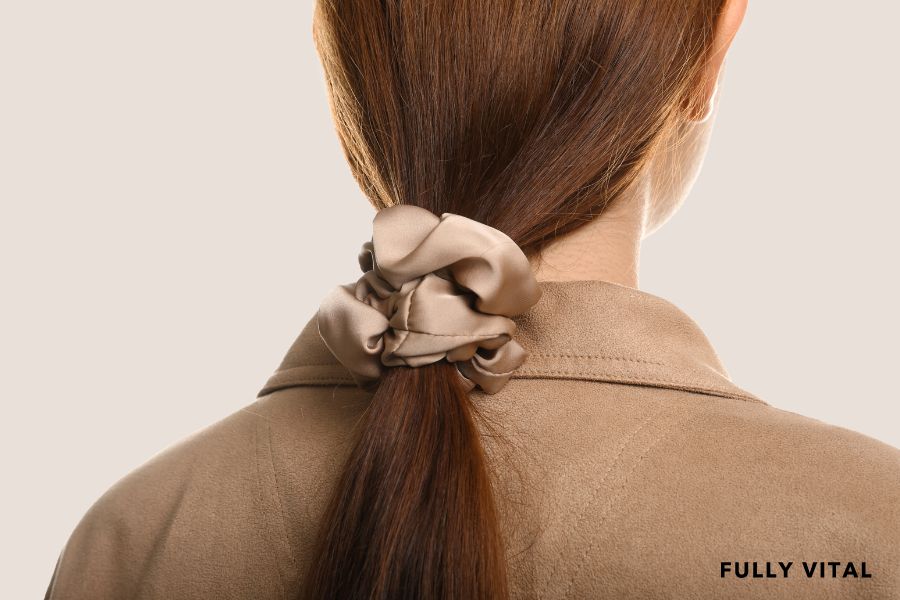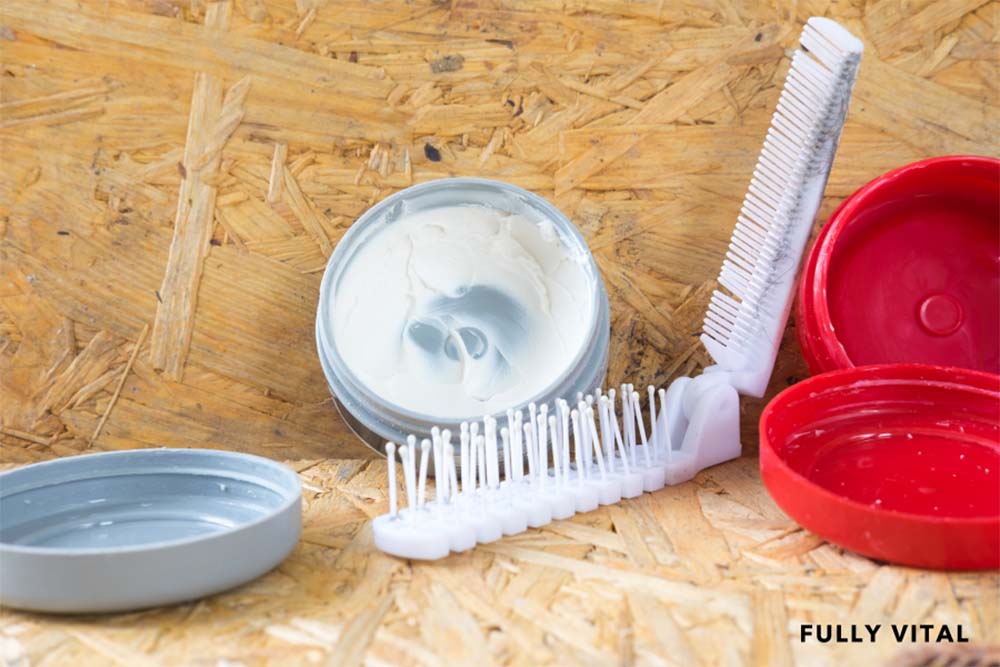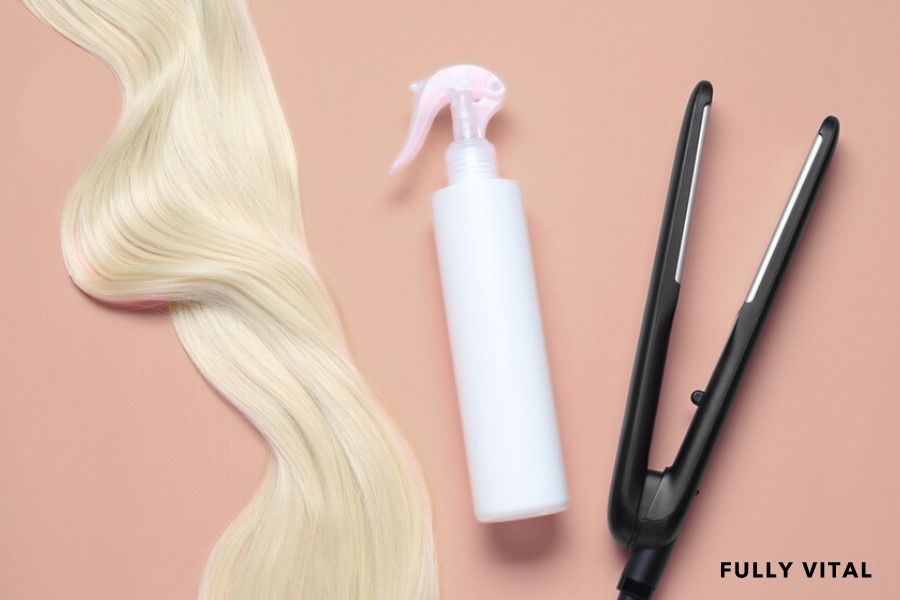
Unlocking The Secrets Of Hair Ties: Your Comprehensive Guide
If you're on a quest for luscious locks and are exploring ways to stimulate hair growth, you've likely come across the term "hair tie."
But what exactly is a hair tie, and why is it important in the world of hair care?
In this comprehensive guide, we'll delve into the ins and outs of hair ties, their benefits, how they work, potential downsides, alternatives, and address frequently asked questions about this essential accessory.

I LOVE MY HAIR NOW
FullyVital hair serum and hair vitamins made tremendous improvements in my hair. I truly love my hair now.
Dorit S.,
What Is A Hair Tie?
A hair tie, also known as a hair elastic or hair band, is a small but mighty hair accessory designed to secure your hair in various styles.
Typically made from elastic material, hair ties are available in different colors, sizes, and designs to cater to various hair types and styling preferences.

Why Is A Hair Tie Important?
Hair ties play a crucial role in maintaining the health and appearance of your hair.
They help prevent hair from getting tangled, reduce breakage, and make it easier to manage your locks.
Whether you're rocking a ponytail, bun, or other hairstyles, a good hair tie is your trusty companion.
How Does A Hair Tie Work?
Hair ties work by gathering your hair together and holding it securely in place.
The elastic material stretches to accommodate your hair's volume, ensuring a snug fit without causing discomfort.
This keeps your hair organized and prevents it from falling loose during your daily activities.
What Are The Benefits Of Using A Hair Tie?
Using a hair tie comes with several benefits, including:
- Preventing Tangles: Hair ties keep your hair neatly in place, reducing the risk of tangles and knots.1
- Reducing Breakage: By securing your hair, they minimize friction and breakage.
- Styling Versatility: Hair ties allow you to create a variety of hairstyles, from casual to elegant.
- Exercise Convenience: They keep your hair out of your face during workouts, ensuring a hassle-free experience.
Are There Any Downsides To Using A Hair Tie?
While hair ties offer numerous advantages, it's essential to use them correctly and be aware of potential downsides, such as:
- Hair Damage: Tying your hair too tightly or using low-quality hair ties can lead to hair breakage and damage.
- Tension Headaches: Wearing a tight hair tie for extended periods may cause tension headaches.
- Hair Creases: Hair ties can leave creases in your hair, affecting its appearance.2
What Are The Alternatives To Using A Hair Tie?
If you're looking for alternatives to traditional hair ties, consider these options:
Hair Clips
Hair clips can secure your hair in place without the need for elastic bands.
Scrunchies
These soft, fabric-covered hair ties are gentler on your hair and come in various styles.
Hair Pins
Bobby pins and hairpins are excellent for securing smaller sections of hair.
Hair Wraps
Silk or satin hair wraps can protect your hair while you sleep and reduce friction.
What Do Hair Ties Symbolize?
In the world of hair accessories, hair ties symbolize more than just a practical means of keeping your locks in check.
They represent:
- Style and Versatility: Hair ties symbolize your ability to express your unique style through your choice of colors, patterns, and designs.
- Convenience: They signify the convenience of effortlessly taming your hair and adapting your look on the go.
- Femininity and Empowerment: For many, hair ties are a symbol of femininity and empowerment, as they allow women to take charge of their appearance.
Why Do Girls Wear Hair Ties?
Girls and women wear hair ties for a variety of reasons, including:
Hairstyle Options
Hair ties offer the flexibility to experiment with different hairstyles, from casual to formal.
Practicality
They keep hair out of the face during activities, making them a practical choice for everyday wear.
Personal Expression
Hair ties are a way to express personal style and add a pop of color or flair to any outfit.
Comfort
Wearing hair ties can provide comfort by preventing hair from falling into the eyes or becoming tangled.
What Hair Ties Are Safe For Hair?
When it comes to choosing hair ties that are safe for your hair, consider the following options:
Safe Hair Tie Materials:
- Fabric Hair Ties: These soft, fabric-covered hair ties are gentle on your hair and reduce the risk of breakage.
- Silk or Satin Hair Wraps: Silk or satin hair wraps minimize friction and are ideal for protecting your hair while you sleep.
- Scrunchies: These fabric-covered elastic bands offer a gentler hold and are less likely to cause damage.
Hair Tie Features:
- No Metal Parts: Opt for hair ties without metal parts, as these can snag and damage your hair.
- Elasticity: Choose hair ties with good elasticity to prevent them from pulling too tightly on your hair.
Do Hair Ties Damage Hair?
Hair ties, when used improperly, can potentially damage your hair.
Here's how to avoid hair tie-related damage:
- Tying Too Tightly: Avoid tying your hair too tightly with hair ties, as this can cause breakage and discomfort.
- Low-Quality Hair Ties: Steer clear of low-quality hair ties that can snag and weaken your hair.
- Worn-Out Hair Ties: Replace hair ties when they lose their elasticity to maintain a secure yet gentle hold.
Should I Stop Using Hair Ties?
There's no need to abandon hair ties altogether, as they can be a valuable tool for managing your hair.
However, it's crucial to use them wisely:
- Responsible Usage: Use hair ties responsibly, avoiding excessive tension and choosing hair-friendly options.
- Alternatives: Consider alternative hair accessories like fabric hair ties, scrunchies, or hairpins when you want to give your hair a break.
- Regular Inspections: Regularly inspect your hair ties for signs of wear and tear, and replace them as needed to ensure they are safe for your hair.
What Is The History Of Hair Ties?
Evolution of Hair Ties:
- Ancient Origins: Hair ties have a rich history, with early civilizations using materials like leather, ribbons, and plant fibers to secure their hair.
- Modernization: Over time, these rudimentary ties evolved into the elastic bands and fabric-covered hair ties we use today.
Cultural Significance:
- Cultural Variations: Different cultures have their own unique styles of hair ties, reflecting the diversity and significance of this accessory worldwide.
- Symbolism: Hair ties have often held cultural and symbolic importance, representing beauty, tradition, and identity in various societies.
What Is The Current Environment Of Hair Ties?
Market Trends:
- Variety and Innovation: The hair tie market has seen a surge in variety, with a wide range of materials, designs, and sizes available to cater to diverse hair types and fashion preferences.
- Sustainability: With increasing environmental consciousness, there's a growing demand for eco-friendly and sustainable hair tie options made from materials like organic cotton and bamboo.
Hair Care Awareness:
- Healthy Hair Movement: Consumers are more aware of the importance of proper hair care, which includes choosing hair ties that minimize damage, breakage, and creasing.
- Online Communities: Social media and online forums have fostered communities of individuals sharing tips and experiences related to hair care and hair tie usage.
What Is The Future Of Hair Ties?
Technological Advancements:
- Smart Hair Accessories: The future may bring smart hair ties equipped with technology to monitor hair health, provide styling suggestions, and offer personalized hair care advice.3
- Innovative Materials: Research into advanced materials may lead to hair ties that are not only gentle on hair but actively promote its health.
Sustainable Practices:
- Biodegradable Hair Ties: As environmental concerns persist, the industry may shift further towards producing biodegradable hair ties to reduce waste.
- Ethical Production: Consumers may increasingly demand transparency in the production process, leading to ethical and fair-trade practices within the hair tie manufacturing sector.
Fashion Integration:
- Fashion Collaborations: Collaborations between hair tie brands and fashion designers could lead to unique, stylish, and couture hair tie collections.
- Hair Tie as a Fashion Statement: Hair ties may become a prominent fashion accessory, not just for practicality but as a statement piece.
Final Thoughts On Hair Ties
We've unraveled the world of hair ties, from their origins and cultural significance to their place in today's diverse hair care landscape.
As we've discovered, these seemingly simple accessories carry a weight of history and symbolism, adapting to the ever-changing needs and preferences of individuals like you, who seek a healthy and vibrant relationship with their locks.
At Fully Vital, we understand the importance of maintaining and enhancing the beauty of your hair.
That's why we offer a variety of hair growth products designed to combat the aging of your hair, ensuring it remains as vibrant and lively as you desire.
Our commitment to healthy hair aligns perfectly with the insights shared in this article.
So, if you're on a quest to rejuvenate your locks and embrace a more vibrant, youthful appearance, explore our range of hair growth products.
We're here to help you nurture the relationship you have with your hair, making each day a great hair day.
Frequently Asked Questions About Hair Ties
How do I choose the right hair tie for my hair type?
When choosing a hair tie, consider your hair type and the hairstyle you want to create.
Thicker hair may require stronger, thicker hair ties, while finer hair benefits from gentler options like scrunchies or silk ties.
Can hair ties cause hair loss?
While hair ties themselves don't directly cause hair loss, using them too tightly or frequently can contribute to breakage and damage.
It's essential to use hair ties responsibly and opt for hair-friendly alternatives when needed.
How often should I replace my hair ties?
Hair ties can lose their elasticity over time, leading to a weaker hold and potential damage to your hair.
Replace your hair ties regularly, especially if they show signs of wear and tear.
Are there specific hairstyles that are best suited for hair ties?
Hair ties are versatile and can be used for various hairstyles, including ponytails, buns, and braids.
The choice of hairstyle depends on your preference and the occasion.
Can I use regular rubber bands as hair ties?
Regular rubber bands can damage your hair due to their strong grip and lack of elasticity.
It's advisable to use hair ties specifically designed for hair care to minimize the risk of breakage.
Can Hair Ties Cause Allergic Reactions?
In some cases, individuals with latex allergies may experience skin irritation or allergic reactions when using hair ties made from latex.
To avoid this, choose latex-free hair ties, which are widely available.
Are There Eco-Friendly Hair Tie Options?
Yes, eco-conscious consumers can find hair ties made from sustainable materials like organic cotton, bamboo, and recycled fabrics.
These options minimize environmental impact and are biodegradable.
How Can I Prevent Hair Tie Creases in My Hair?
To prevent hair tie creases, opt for looser hairstyles when possible, or use fabric hair ties and scrunchies, which are less likely to leave marks on your hair.
Additionally, remove hair ties gently to minimize creasing.
Can Hair Ties Help with Hair Growth?
While hair ties themselves don't directly stimulate hair growth, they can indirectly contribute to healthier hair by reducing breakage and tangling.
Healthy hair is more likely to grow longer over time.
Can I Use Hair Ties with Wet Hair?
Using hair ties on wet hair can cause more significant damage and breakage, as wet hair is more fragile.
It's best to wait until your hair is mostly dry before using hair ties.
Sources:
- Knots in Your Hair: Causes, Treatment, Prevention, and Products. (2019, September 20). Healthline. https://www.healthline.com/health/knots-in-hair
- Hairstyles that pull can lead to hair loss. (n.d.). Www.aad.org. https://www.aad.org/public/diseases/hair-loss/causes/hairstyles
- Morganti, P., Morganti, G., & Coltelli, M.-B. (2021). Smart and Sustainable Hair Products Based on Chitin-Derived Compounds. Cosmetics, 8(1), 20. https://doi.org/10.3390/cosmetics8010020







